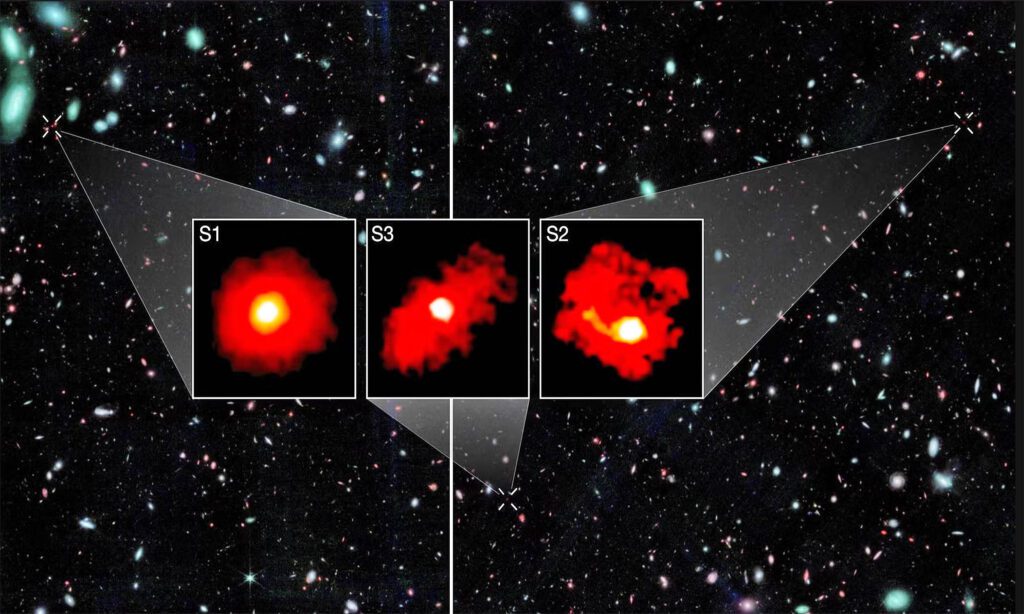As the James Webb Space Telescope (JWST) began sending deep field images, astronomers expected to uncover faint infant galaxies. Instead, they found giant “red monsters”—massive, bright galaxies shining 500 million to 1 billion years after the Big Bang. This discovery challenged previous understandings of galaxy growth, contradicting the standard lambda cold dark matter (λCDM) framework.
An international research team used JWST’s Fresco survey to analyze 36 galaxies, finding that while most aligned with λCDM predictions, three particularly massive galaxies exceeded expectations, each with a stellar mass more than twice that of the Sun. These galaxies may have contributed significantly to early star formation, with one possibly fueling 17% of star formation during their epoch.
The findings suggest that early galaxies were more efficient at star formation than previously thought, with these “red monsters” rapidly converting available material into stars. This challenges long-standing models of galaxy evolution, indicating they could form stars under conditions that allowed for greater gas density and other factors.
The discoveries provide new insights into the early universe, suggesting it was more dynamic and productive than previously understood. Future Webb observations aim to further explore these anomalies, potentially reshaping our understanding of cosmic history.
Source link


